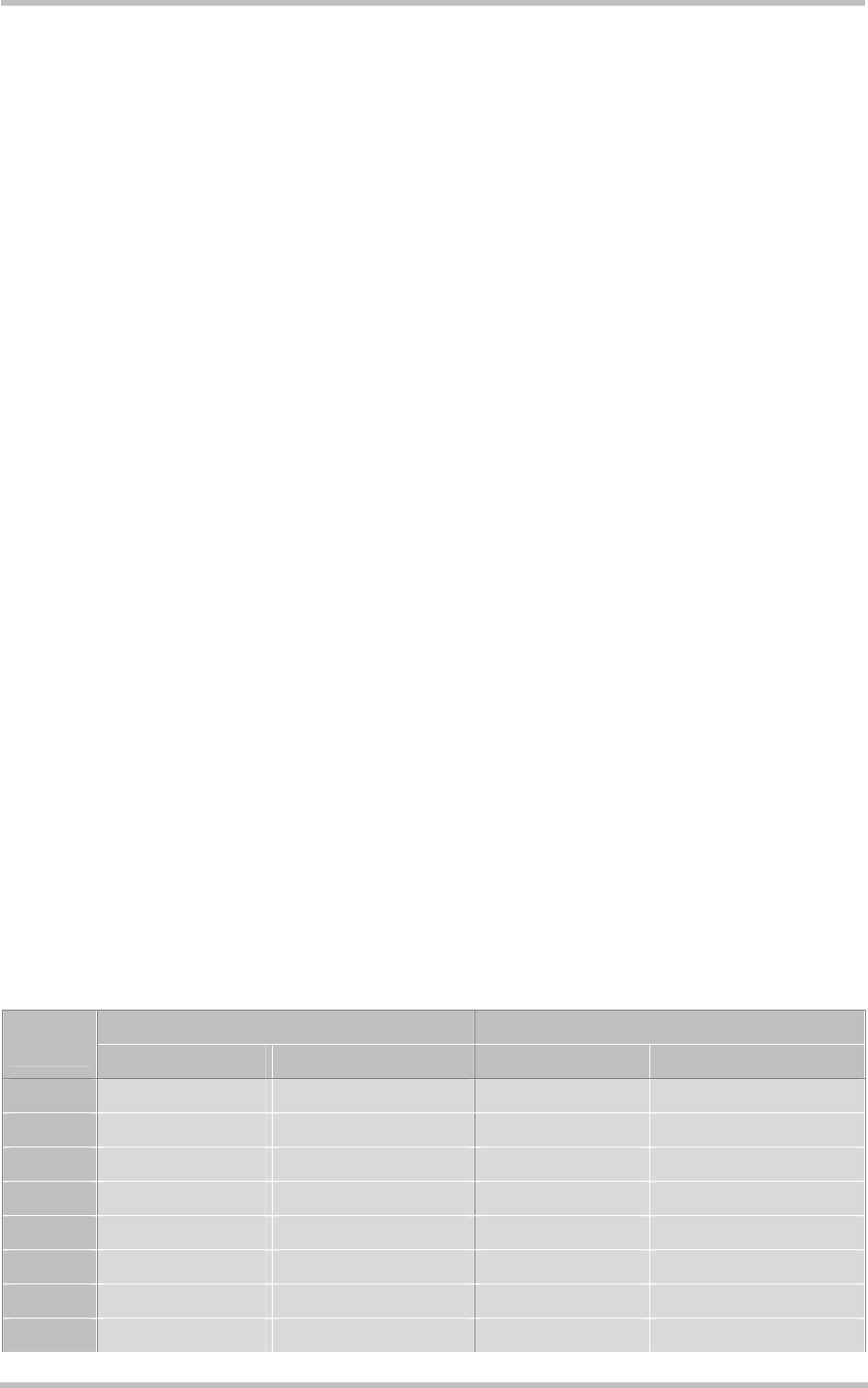User's Manual
Table Of Contents
- Document history
- Introduction
- Product concept
- Application Interface
- Antenna interface
- Electrical, reliability and radio characteristics
- Mechanics
- Reference Approval
- Design example
- List of parts and accessories

MC55/56 Hardware Interface Description
Confidential / Preliminary
s
MC55/56_hd_v03.00 Page 52 of 104 16.08.2005
3.9.1 Features supported on first and second serial interface
ASC0
• 8-wire serial interface
• Includes the data lines /TXD0 and /RXD0, the status lines /RTS0 and /CTS0 and, in
addition, the modem control lines /DTR0, /DSR0, /DCD0 and /RING0.
• It is primarily designed for voice calls, CSD calls, fax calls and GPRS services and for
controlling the GSM engine with AT commands. Full Multiplex capability allows the
interface to be partitioned into three virtual channels, yet with CSD and fax services only
available on the first logical channel. Please note that when the ASC0 interface runs in
Multiplex mode, ASC1 cannot be used. For more detailed characteristics see [11].
• The /DTR0 signal will only be polled once per second from the internal firmware of
MC55/56.
• The /RING0 signal serves to indicate incoming calls and other types of URCs (Unsolicited
Result Code). It can also be used to send pulses to the host application, for example to
wake up the application from power saving state. For further details see Chapter
3.12.2.3.
• Autobauding is only selectable on ASC0 and supports the following bit rates: 1200, 2400,
4800, 9600, 19200, 38400, 57600, 115200, 230400 bps.
• Autobauding is not compatible with multiplex mode, see [11].
ASC1
• 4-wire serial interface
• Includes only the data lines /TXD1 and /RXD1 plus /RTS1 and /CTS1 for hardware
handshake. This interface is intended for voice calls, GPRS services and for controlling
the GSM engine with AT commands. It is not suited for CSD calls, fax calls and Multiplex
mode.
• On ASC1 no RING line is available. The indication of URCs on the second interface
depends on the settings made with the AT^SCFG command. For details refer to [1].
ASC0 and ASC1
• Both interfaces are configured for 8 data bits, no parity and 1 stop bit, and can be
operated at bit rates from 300bps to 230400 bps.
• XON/XOFF software flow control can be used on both interfaces (except if power saving
is active).
Table 13: DCE-DTE wiring of 1
st
serial interface
DCE DTE V.24
circuit
Pin function Signal direction Pin function Signal direction
103 /TXD0 Input /TXD Output
104 /RXD0 Output /RXD Input
105 /RTS0 Input /RTS Output
106 /CTS0 Output /CTS Input
108/2 /DTR0 Input /DTR Output
107 /DSR0 Output /DSR Input
109 /DCD0 Output /DCD Input
125 /RING0 Output /RING Input










